Here at Food for Hope, we love to be in the community and connect with as many people as possible. As we share our mission, we have heard a lot of common misconceptions about how things operate behind the scenes at a nonprofit organization. I thought I would take this opportunity to pull back the curtain and bust some of the most frequently heard myths!
Myth #1: Food for Hope is mostly funded by the government.
Food for Hope receives funding from several different sources, and the government is not one of our primary contributors. Many people are surprised that almost half of our overall funding currently comes from local individuals and businesses. We are not exaggerating when we tell members of the community that their contributions are vital to what we do! The next greatest sources of funding are grants. I currently work with our grant writer to write at least 30 grants a year from various local and regional foundations. Grants are never guaranteed, and sometimes you spend many hours working on an application that results in no additional funds. Food for Hope also hosts fundraising events and community activities like our annual Gala, Bike N Brew, and the Perfect Pairing events. These events are always encouraging and fun, but serve mainly as an opportunity to share our mission with the community, and are not a primary source of the money we need to operate. Finally, Food for Hope does utilize some government funding, and the available amount increased for the last few years due to COVID response initiatives. However, these resources are going away and will not be a reliable source in the coming years. As our organization grows, it is a formidable challenge to continue to expand our sources of funding and provide a solid foundation for operational expansion to help more children in need! If you or your business would like to partner with us, please visit our website https://foodforhope.net/donate.
Myth #2: All of the food that Food for Hope distributes is donated or able to be purchased at a discounted price.
Many people understandably assume that hunger relief organizations can get most of the food they distribute for free or at a very low cost. This may be true for some nonprofits, but unfortunately, it is not the case for Food for Hope. On an average week during the school year, Food for Hope distributes several thousand pounds of food through our various programs. Due to the diverse nature of the communities we serve and our focus on students, we try to be very intentional about sourcing quality items that are healthy and culturally sensitive. All of these factors together mean that we cannot rely solely on donated food to meet the needs of our programs. In fact food is currently the largest expense in our overall operational budget. Food for Hope orders food from the Food Bank of the Rockies and those items are discounted from prices you would find in the grocery store. However, the quantity we order means the cost is still significant. Any food items that we cannot source from the Food Bank of the Rockies, we purchase from other vendors like Costco, East Denver Food Hub, and Barber’s Foods. We are very thankful to receive food donations from local community partners like We Don’t Waste, and some food vendors such as Bimbo Bakeries. However, donated food only makes up only 15% of what we use overall.
Myth #3: Many people take advantage of Food for Hope’s resources when they don’t really need them.
Unfortunately, as with any community resource, you do have people who abuse the system and take things that they don’t truly need. It's unfortunate that this is the case, and can lead to people becoming cynical about the purpose of nonprofit organizations as a whole. However, after working in this field for 10 years, I can attest that those taking advantage of resources are very few, and don't encompass the vast majority of families. Most of the students and families we’ve encountered truly value the resources provided to them, and they have a tremendous amount of dignity in not using a program when they don’t need it anymore. Last year, there was a mom who came to one of our food banks regularly. Shortly after, we went a period of time without seeing her. When she returned, we offered to check her in to shop but she kindly refused. She had only come back to bring two friends whose families were struggling and needed nutritional support. This example is far more in line with what we see as we get to know the families we serve. We hope that others will see the beauty in giving families who are hurting a hand up when they need it most.
If you have any other questions about what goes on behind the scenes at Food for Hope, send me an email and I'll consider featuring it in a future blog post! Email me at emily@foodforhope.net
Consider supporting Food for Hope’s mission to help us source nutritious foods, enabling us to expand our operations and serve even more students and families facing food insecurity in our community https://foodforhope.net/donate


